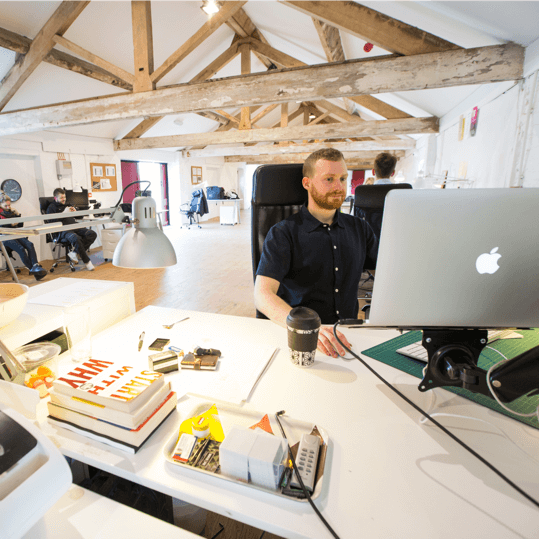In today’s competitive digital landscape, having a visually appealing website is crucial — but so is ensuring it performs well in search engines. Many businesses fall into the trap of prioritizing one over the other: some focus too heavily on aesthetics and neglect optimization, while others create SEO-friendly sites that lack visual appeal and user engagement. The real challenge lies in balancing aesthetics and SEO to achieve both beauty and performance.
With smart web development strategies, you can web design a website that not only captivates visitors but also ranks high in search engine results. Let’s explore how to strike this perfect balance between design elegance and SEO effectiveness.
1. The Connection Between Design and SEO
Design and SEO are not opposites; they’re two sides of the same coin. A beautiful website attracts attention, but without visibility, no one will see it. Likewise, a well-optimized website that looks outdated or confusing will struggle to retain users.
In web development, SEO and design work together to ensure that both search engines and users have a seamless experience. For example, fast-loading images, proper use of HTML tags, and mobile responsiveness all contribute to both better aesthetics and higher rankings.
Your goal should be to create a visually pleasing interface that also adheres to SEO best practices — a website that looks good and gets found.
2. Prioritize a Clean, User-Centric Design
Search engines like Google prioritize user experience as a ranking factor. A clean, intuitive layout helps users find what they need quickly, reducing bounce rates and increasing time spent on your site — both of which positively affect SEO.
Web development teams can achieve this by focusing on:
Simple navigation: Avoid cluttered menus. Use clear categories and internal linking to guide visitors effortlessly.
Whitespace: Allow breathing room between elements. It improves readability and keeps users engaged.
Readable typography: Choose web-safe fonts and maintain consistent spacing.
Consistent branding: Aesthetic consistency builds trust and recognition — another factor that encourages engagement.
When visitors enjoy browsing your website, search engines take note.
3. Optimize Images Without Sacrificing Quality
Images play a vital role in web design aesthetics, but they can also slow down your site if not optimized properly. In modern web development, the goal is to strike the right balance — maintaining image quality while keeping file sizes light.
Here’s how to achieve it:
Compress images using tools like TinyPNG or WebP format.
Use responsive images that adjust based on device size.
Add alt text for every image to help search engines understand what it depicts.
Use descriptive filenames that include keywords.
This not only improves loading speed but also enhances accessibility and SEO value.
4. Mobile-First Design: Beauty Meets Functionality
With the majority of users accessing websites via smartphones, mobile-first web development has become a must. A visually stunning desktop site is meaningless if it doesn’t translate well on mobile.
Responsive design ensures that layouts, images, and typography adapt smoothly across different screen sizes. From an SEO standpoint, Google’s mobile-first indexing means your site’s mobile version determines its search ranking.
Therefore, your mobile design must retain aesthetic elements — color schemes, typography, and imagery — while being lightweight and easy to navigate. This balance enhances user experience, which directly influences SEO performance.
5. Focus on Fast Loading Speeds
Website aesthetics often involve high-quality images, animations, and videos — all of which can slow down load times. But site speed is one of Google’s key ranking signals.
To maintain a beautiful yet fast website, web development experts use techniques like:
Minimizing CSS and JavaScript files.
Implementing browser caching.
Using content delivery networks (CDNs) to serve files faster.
Avoiding unnecessary plugins or large background videos.
A fast-loading site not only pleases search engines but also keeps users from leaving prematurely.
6. Use SEO-Friendly Design Elements
Every design choice — from headings to color palettes — can impact SEO when implemented thoughtfully.
Proper heading structure (H1–H6): Helps search engines understand page hierarchy and content relevance.
Readable URLs: Keep them short, descriptive, and keyword-rich.
Internal linking: Guide users to related pages to improve engagement and crawlability.
Schema markup: Helps search engines display rich snippets like reviews or ratings in search results.
Effective web development integrates these features seamlessly into your design, ensuring optimization doesn’t compromise visual flow.
7. Typography and Color Choices That Support Readability
Beautiful typography and color schemes define your brand’s personality — but readability must come first. For SEO and user experience, text should be easy to read on all devices.
Use font sizes that scale well across screens.
Maintain strong contrast between text and background colors.
Limit the use of decorative fonts to headings only.
Search engines favor websites that users engage with — and readability directly impacts engagement time. A harmonious color palette can make content inviting, while legible fonts ensure your message is absorbed effectively.
8. Engaging Visuals with Purpose
Visuals like infographics, icons, and videos can make your website stand out — but they should serve a clear purpose. For instance, videos can increase engagement and dwell time, which boosts SEO metrics, but they should be optimized for fast playback.
Using visuals strategically — in headers, CTAs, and content sections — enhances aesthetics without overwhelming users. This combination of beauty and usability is a hallmark of professional web development.
9. Balance Creativity with Structure
Creative freedom is essential in design, but too much experimentation can harm usability and SEO. While animations, parallax effects, and unconventional layouts look impressive, they can confuse users or cause technical issues.
A successful web design maintains structure through consistent grid layouts, logical navigation, and predictable user flows — all while using creative elements to highlight key areas. This balance ensures your website remains engaging and functional.
10. Test, Analyze, and Improve
Aesthetic and SEO balance isn’t a one-time task — it’s an ongoing process. Use tools like Google PageSpeed Insights, Lighthouse, and Analytics to measure performance, usability, and engagement.
A/B testing can reveal which design or layout drives better conversions without hurting rankings. Regularly updating content and visuals keeps your website fresh and SEO-friendly.
In web development, continuous optimization ensures your site evolves with changing algorithms and design trends.
Conclusion
How to Balance Aesthetics and SEO in Website Design is both an art and a science. A visually stunning website attracts attention, while an optimized one ensures visibility and performance. By understanding how to balance aesthetics and SEO in website design, businesses can blend creative design principles with strong web development practices to build websites that not only look beautiful but also rank high and convert effectively.
The ideal website is one where aesthetics enhance usability and SEO works quietly in the background — delivering a smooth, engaging experience for every visitor. Ultimately, mastering how to balance aesthetics and SEO in website design leads to true digital success, where design and optimization come together to make your brand thrive online.




